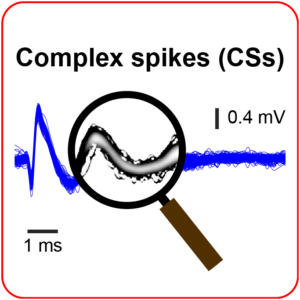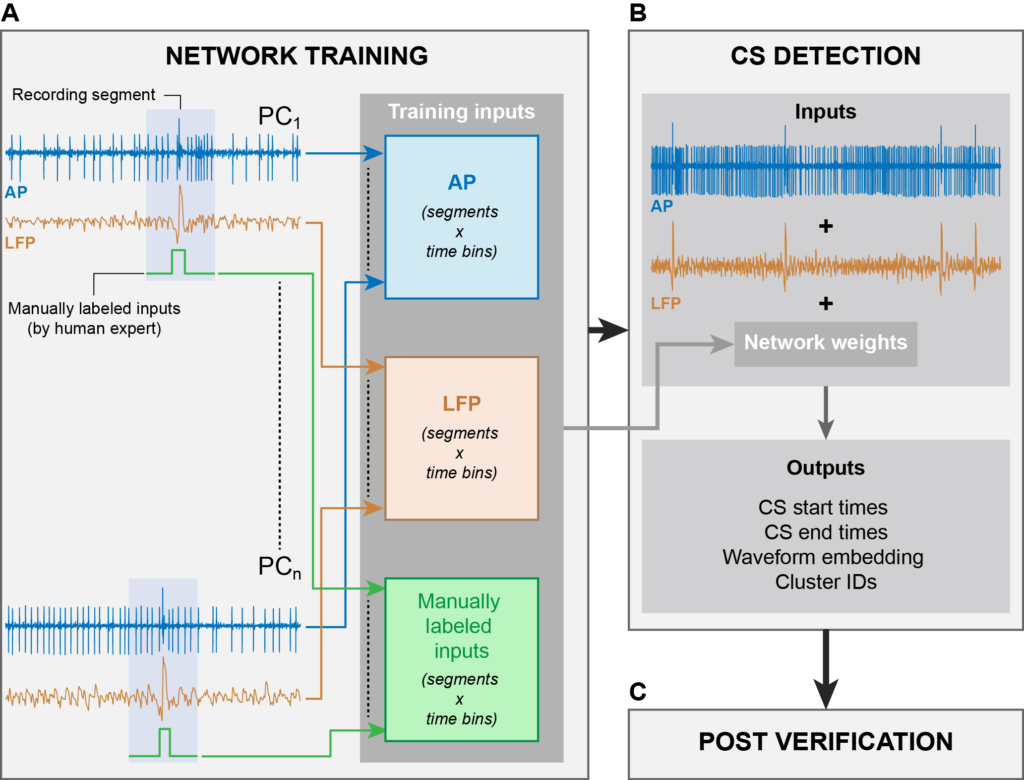
We have a new paper in the Journal of Neurophysiology describing a novel algorithm for detecting complex spikes of cerebellar Purkinje cells. Complex spikes are highly rare events, and they are substantially different from simple spikes that occur in the same cells at a much higher frequency (as well as in many other brain cells at varying rates). Detecting Purkinje cell complex spikes has been a significant challenge for the progression of the field of cerebellar research, particularly in terms of testing new hypotheses about these rare events in Purkinje cell outputs. One reason for such a challenge has been that complex spike detection is often most reliable, up to now, with tedious manual labeling. An automated, high performance algorithm for complex spike detection can help to motivate new experiments aimed at testing the potentially important functions of these complex spikes, for example in learning and adaptation.
 We started from our state-of-the-art machine learning framework for eye movement detection (U’n’Eye), and we developed a novel algorithm for detecting complex spikes. The algorithm outperforms all existing methods for complex spike detection that we know of, and it is also very efficient, requiring little training data. Importantly, our algorithm reliably detects onsets and ends of complex spikes in addition to just their presence versus absence. Given that complex spike durations can have strong implications on certain behavioral functions supported by the cerebellum, like motor output generation and control, a systematic method for estimating complex spike durations was needed.
We started from our state-of-the-art machine learning framework for eye movement detection (U’n’Eye), and we developed a novel algorithm for detecting complex spikes. The algorithm outperforms all existing methods for complex spike detection that we know of, and it is also very efficient, requiring little training data. Importantly, our algorithm reliably detects onsets and ends of complex spikes in addition to just their presence versus absence. Given that complex spike durations can have strong implications on certain behavioral functions supported by the cerebellum, like motor output generation and control, a systematic method for estimating complex spike durations was needed.
We validated the performance of our algorithm using several different methods, one of them being to demonstrate that when complex spikes occur, simple spikes that are normally output from the very same cells at a very high rate completely cease to exist for a brief period of time (approximately 20 ms in the example shown on the right).
Our framework is available openly for anyone to use it (GitHub page), and with proper tutorials on usage.
The paper can be downloaded and read from our Publications page.

